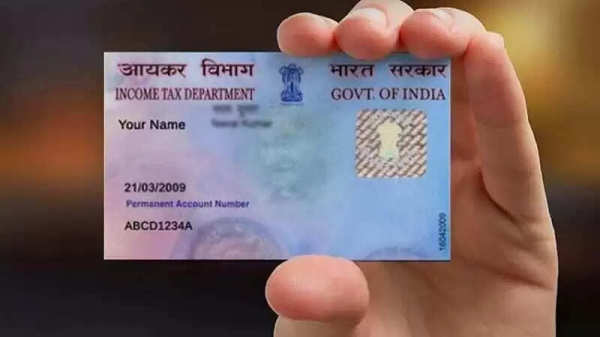
PAN Card... This 10 digit number is the biggest proof of our financial identity today. From opening an account in a bank, filing Income Tax Return (ITR), buying property and making big transactions, PAN Card is required everywhere. But have you ever heard about TAN Card?
Most common people do not know about it, but if you are running a business, own a company, or deduct tax while making payment to someone in any way, then this TAN number is as important for you as PAN Card, but even more than that. Let us understand today what is this TAN and who uses it.
What is TAN number?
The full form of TAN is Tax Deduction and Collection Account Number.
This is also a 10-digit alphanumeric number issued by the Income Tax Department.
Its purpose is to identify all those individuals or institutions who are responsible for tax deduction at source (Tax Deducted at Source - TDS) or tax collection at source (Tax Collected at Source - TCS).
In simple words, if you are making any payment to someone and it is your responsibility to deduct tax on that payment and deposit it with the government under the law, then it is mandatory for you to have a TAN number.
What is the big difference between PAN and TAN?
The Income Tax Department issues both PAN card and TAN card. Both have a ten-digit number. But both are used for different people. It is necessary for those who pay tax to get a PAN card because they have to fill this 10-digit number while paying tax. Apart from this, the government also uses PAN to monitor the big transactions done by you. On the other hand, TAN number is necessary for those who deduct tax. TAN number is very important in all documents related to TDS.
For whom is it mandatory to take TAN?
According to section 203A of the Income Tax Act, 1961, every person or institution that deducts TDS will have to take TAN. It includes:
All companies (private and public limited)
Partnership firms
Sole Proprietorship
Hindu Undivided Family (HUF)
Trusts and societies
Central and state government departments
Individuals who are required to get their accounts audited (such as doctors, lawyers whose income is more than a limit).
What will happen if TAN is not taken?
Deducting or depositing TDS without TAN number is a serious offense.
TDS will not be deducted: If you do not have TAN, the bank will not accept your TDS challan.
Heavy penalty: Under Section 272BB(1) of the Income Tax Act, not applying for TAN or giving wrong TAN can attract a penalty of Rs 10,000.
How to apply for TAN?
Applying for TAN is very easy. Just like PAN card, TAN card can be made both online and offline. For this, you have to fill Form 49B, as well as deposit a nominal fee. You can keep online credit card, demand draft, cheque or net banking as the mode of payment. To get TAN card made online, you can apply by visiting the website of NSDL (National Securities Depository Limited). TAN card will be delivered to your home within 15 days of applying.
Frequently Asked Questions (FAQs)
1. Does a normal salaried person need a TAN?
No. A normal salaried person pays tax, not deducts it. Hence, he only needs a PAN card and not a TAN.
2. Can a person have both PAN and TAN?
Yes, absolutely. If a person (say a doctor or an auditor) is running his own business and deducts TDS on the salaries of his employees, he will have both a PAN card (for personal tax) and a TAN number (for TDS) in the name of his business.
3. Do I need a TAN if I am just paying rent for my house to an individual?
No. If you are paying rent to another individual as an individual, you generally do not need a TAN. A TAN is required only if you are running a business or are subject to audit.
4. Can I use my PAN card to pay TDS?
No. You have to mention TAN number in any challan, certificate or return related to TDS. PAN number cannot be used there.
5. How much time does it take to get TAN number?
After submitting the application, usually within 5 to 7 working days you get your TAN number allotted.